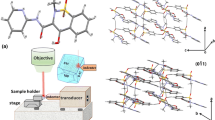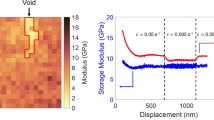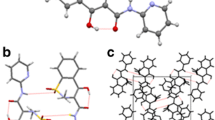Abstract
Indentation has been used for several decades to conveniently assess the hardness and modulus of various compacts. However, this measurement is dependent on the size of the indentation area from a few nanometers to several millimeters, which is determined by the maximum indentation force (MIF). Micro-indentation often loses its ability to give an accurate representation of the hardness due to its relatively small micron-size indentation area compared with the dimensions of the structural inhomogeneity of compacts. This study used a different approach to micro-indentation by examining whether this method can probe the inhomogeneity of compacts with varying MIF. Two typical pharmaceutical excipients, one brittle and one ductile, were used as model compacts. The representative hardness and modulus values were available when the MIF was >1000 mN. Changes in the standard deviation of the indentation hardness reflected the structural inhomogeneity of the compacts, which was found to increase with decreasing MIF to below 800 mN in the case of the microcrystalline cellulose compacts. The information on the structural inhomogeneity obtained by micro-indentation appears to be consistent with the observations from microscopy investigations. Anisotropy and other related structural information could be readily obtained by probing the two different surfaces of compacts with changing MIF, one parallel and the other perpendicular to the compaction pressure direction.








Similar content being viewed by others
References
H. E. Boyer, “Hardness testing” (ASM International, 1994)
W. C. DUNCAN-HEWITT and G. C. WEATHERLY, J. Mater. Sci. Lett. 8 (1989) 1350
W. C. DUNCAN-HEWITT and G. C. WEATHERLY, Pharm. Res. 6 (1989) 1060
W. C. DUNCAN-HEWITT and G. C. WEATHERLY, Pharm. Res. 6 (1989) 373
M. CELIK and M. E. AULTON, Drug Development and Industrial Pharmacy. 22(1) (1996) 67
S. K. LUM and W. C. DUNCAN-HEWITT, Pharm. Res. 13 (1996) 1739
K. V. PRASAD, D. B. SHEEN and J. N. SHERWOOD, Pharm. Res. 18 (2001) 867
R. KUPPUSWAMY, S. R. ANDERSON, L. L. AUGSBURGER and S. W. HOAG, AAPS Pharmsci. 3 (2001) 1
J. T. Carstensen, “Advanced pharmaceutical solids” (Marcel Dekker, 2001 p. 387, p. 407)
G. Alderborn and C. Nystrom, “Pharmaceutical powder compaction technology” (Marcel Dekker, 1996)
X. LIAO and T. S. WIEDMANN, J. Pharm. Sci. 94 (2005) 79
R. J. ROBERTS, R. C. ROWE and P. YORK, Pharm. Sci. 1 (1995) 501
R. J. ROBERTS, R. C. ROWE and P. YORK, Int. J. Pharm. 125 (1995) 157
J. LEE, J. Pharm. Sci. 92 (2003) 2057
W. C. DUNCAN-HEWITT, Powder Technol. 60 (1990) 265
W. C. DUNCAN-HEWITT, Drug Dev. Ind. Phar. 19(17&18) (1993) 2197
W. C. DUNCAN-HEWITT and G. C. WEATHERLY, J. Pharm. Sci. 79 (1990) 147
W. C. DUNCAN-HEWITT and G. C. WEATHERLY, J. Pharm. Sci. 79 (1990) 273
M.-C. LIN and W. C. DUNCAN-HEWITT, Int. J. Pharm. 106 (1994) 187
N. X. RANDALL, C. JULIA-SCHNUTZ, J. M. SORO, J. von STEBUT and G. ZACHARIE, Thin Solid Films. 308–309 (1997) 297
W. C. OLIVER and G. M. PHARR, J. Mater. Res. 7 (1992) 1564
G. M. PHARR, W. C. OLIVER and F. R. BROTZEN, J. Mater. Res. 7 (1992) 613
H. GAO, Y. HUANG, W. D. Nix and J. W. HUTCHINSON, J. Mech. Phys. Solids. 47 (1999) 1239
N. A. FLECK and J. W. Hutchinson, J. Mech. Phys. Solids. 41 (1993) 1825
J. LEE, J. Phar. Sci. 93 (2004) 2310
J. LEE, Macromol. Biosci. 5 (2005) 1085
G. BAR, M. GANTER, R. BRANDSCH, L. DELINEAU and M.-H. WHANGBO, Langmuir 16 (2000) 5702
S. N. MAGONOV, V. ELINGS and M.-H. WHANGBO, Surface Science. 375 (1997) L385
N. Z. QURESHI, M. ROGUNOVA, E. V. STEPANOV, G. CAPACCIO, A. HILTNER and E. BAER, Macromolecules 34 (2001) 3007
R. J. ROBERTS, R. C. ROWE and P. YORK, Int. J. Pharm. 91 (1993) 173
R. VAIDYANATHAN, M. DAO, G. RAVICHANDRAN and S. SURESH, Acta Mater. 49 (2001) 3781
Acknowledgements
I like to thanks Dr. Batra, Dr. Bika and Dr. Panmai at Merck for their help for JL to start working on this testing. This work was supported by Korea Energy Management Corporation (KEMCO) (Project #: 2006-E-ID11-P-30–3-020).
Author information
Authors and Affiliations
Corresponding author
Rights and permissions
About this article
Cite this article
Lee, J. Structural heterogeneity of pharmaceutical compacts probed by micro-indentation. J Mater Sci: Mater Med 19, 1981–1990 (2008). https://doi.org/10.1007/s10856-007-3283-3
Received:
Accepted:
Published:
Issue Date:
DOI: https://doi.org/10.1007/s10856-007-3283-3




